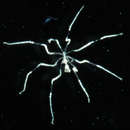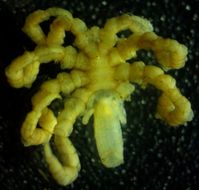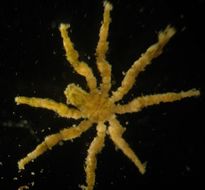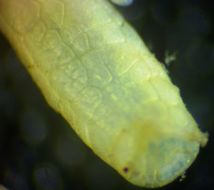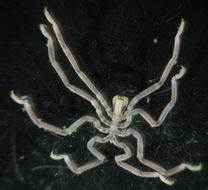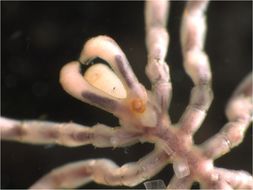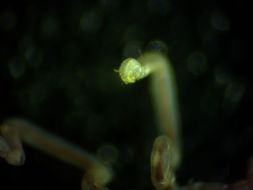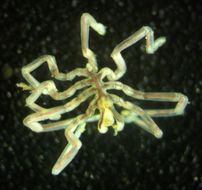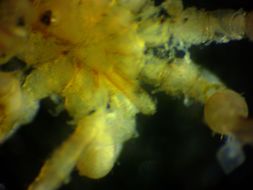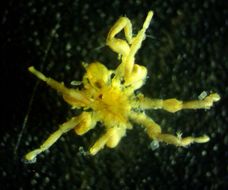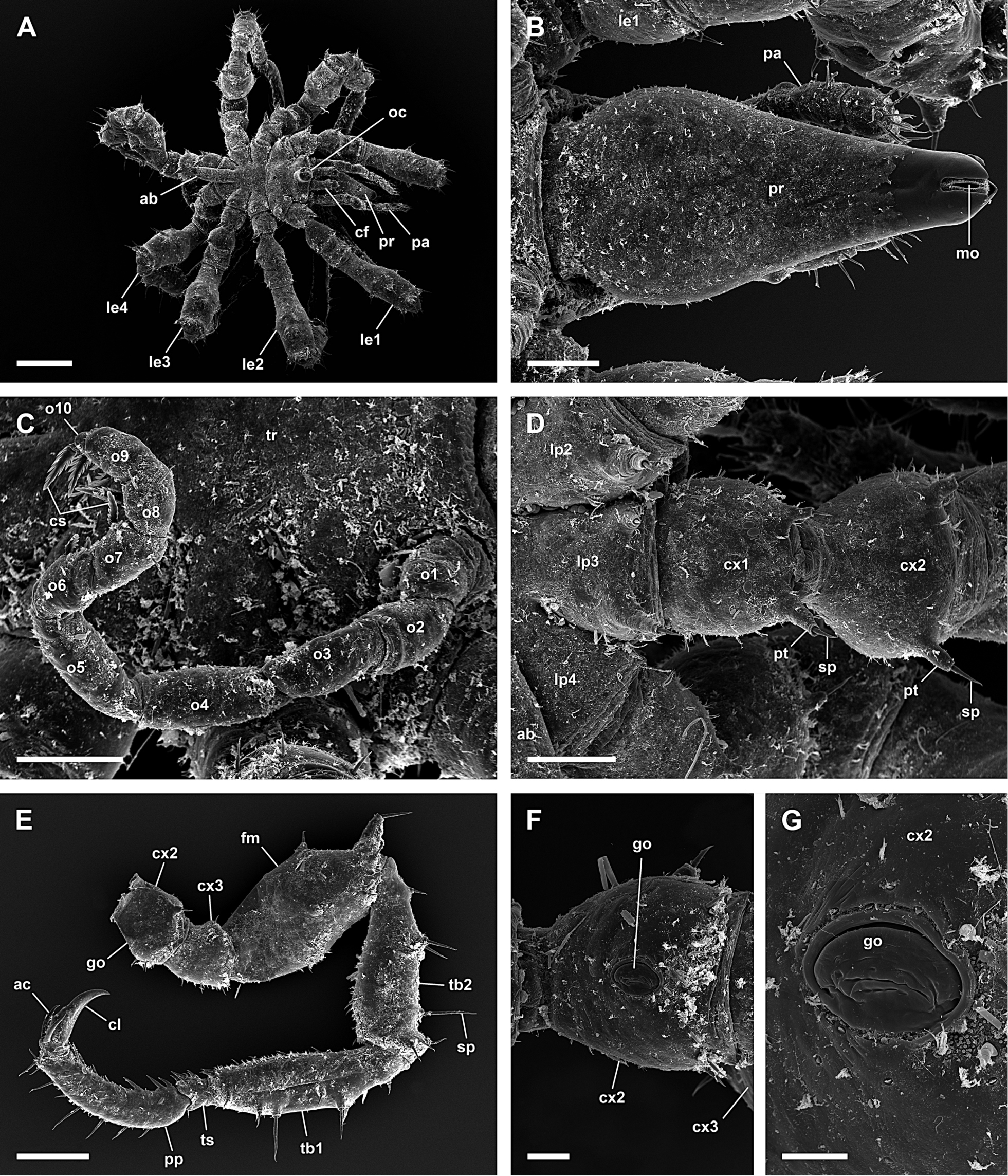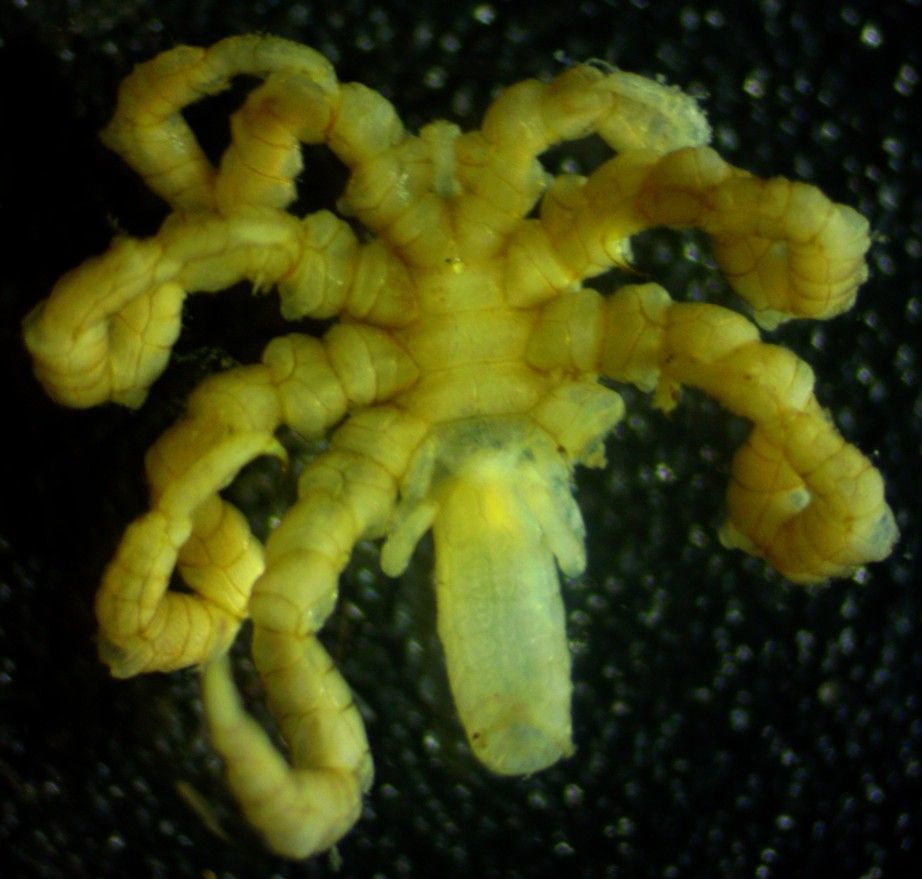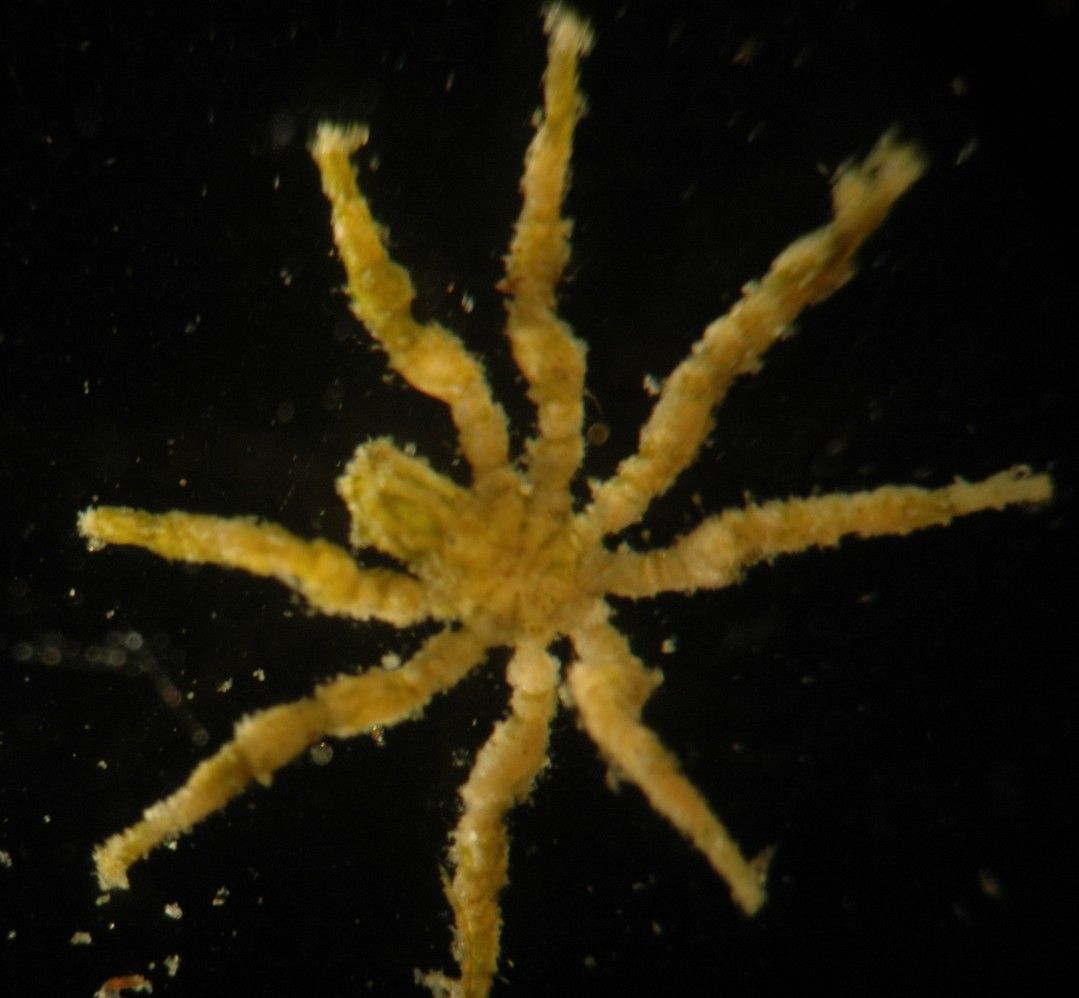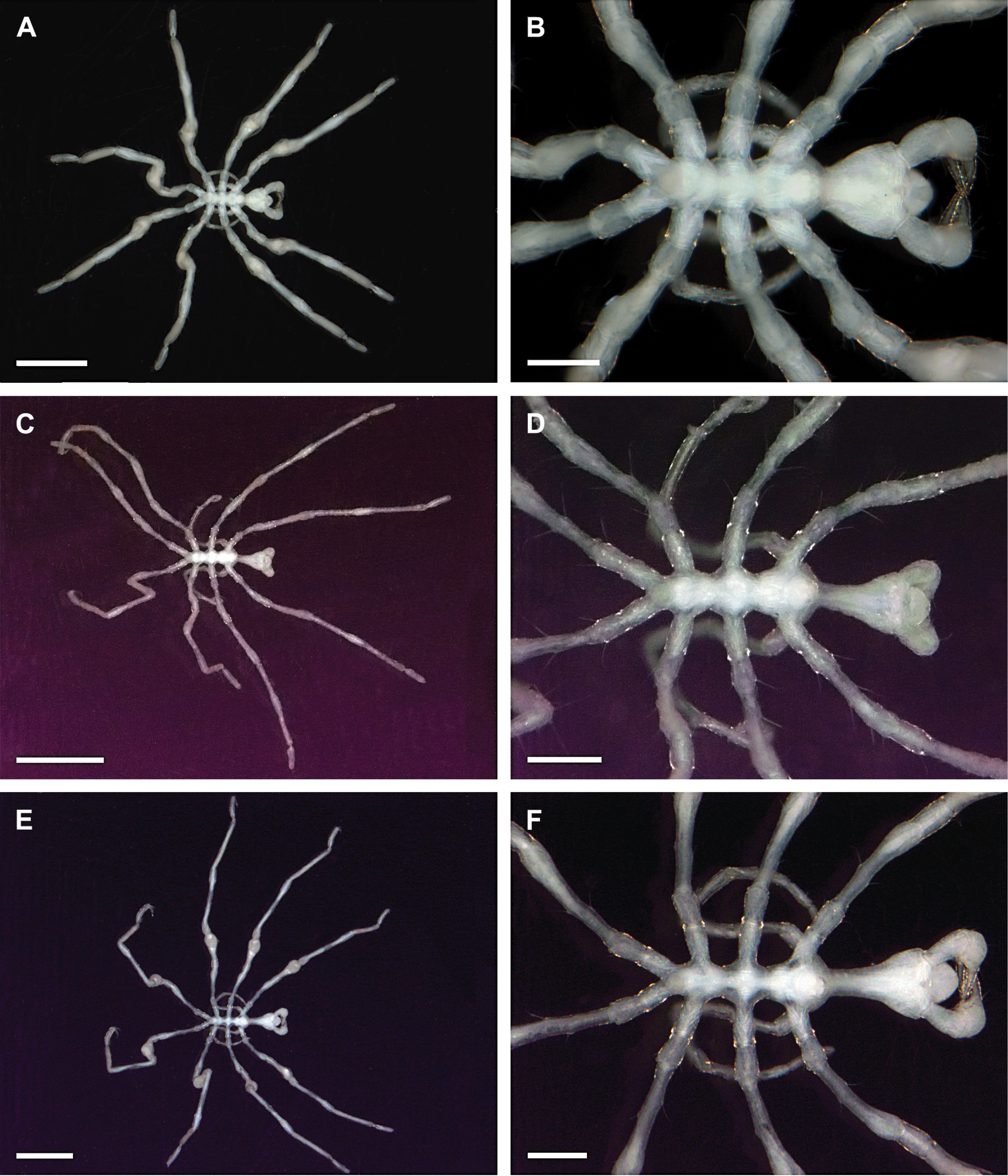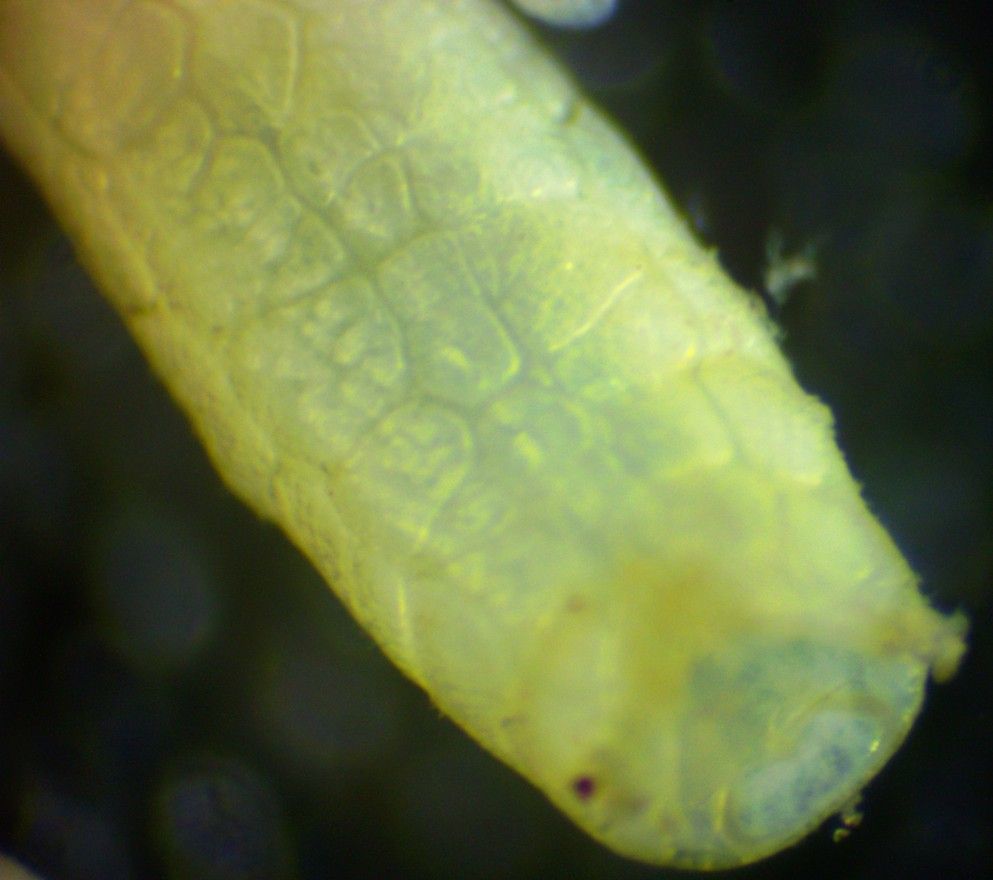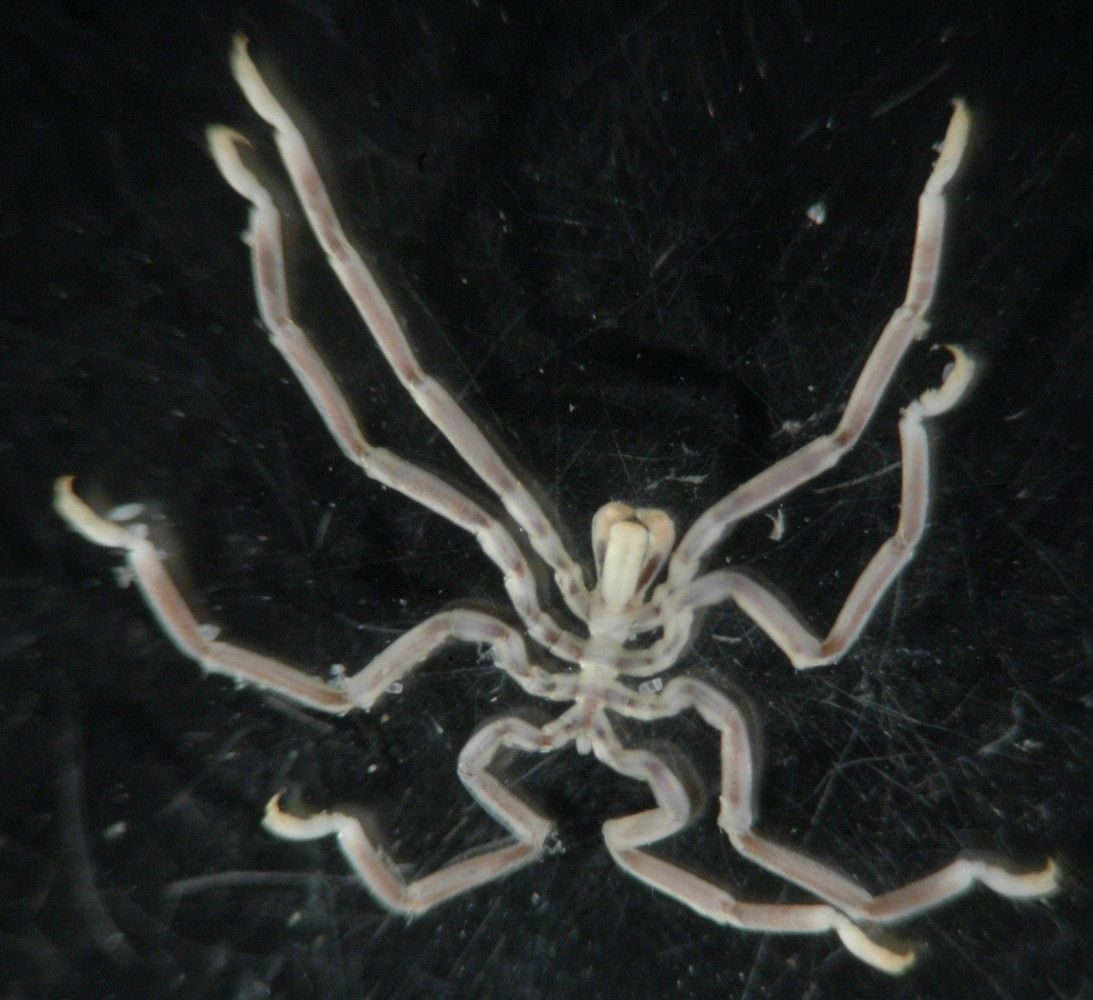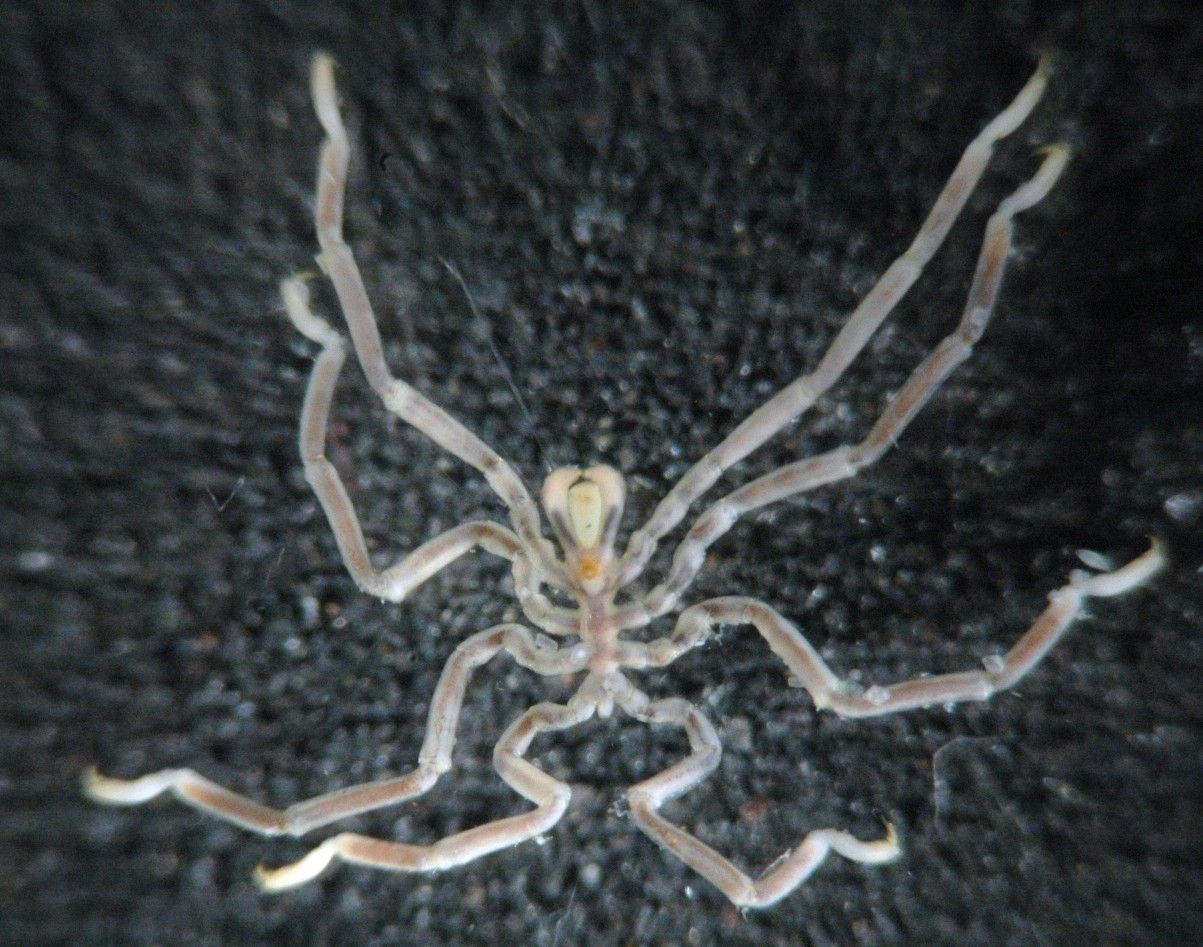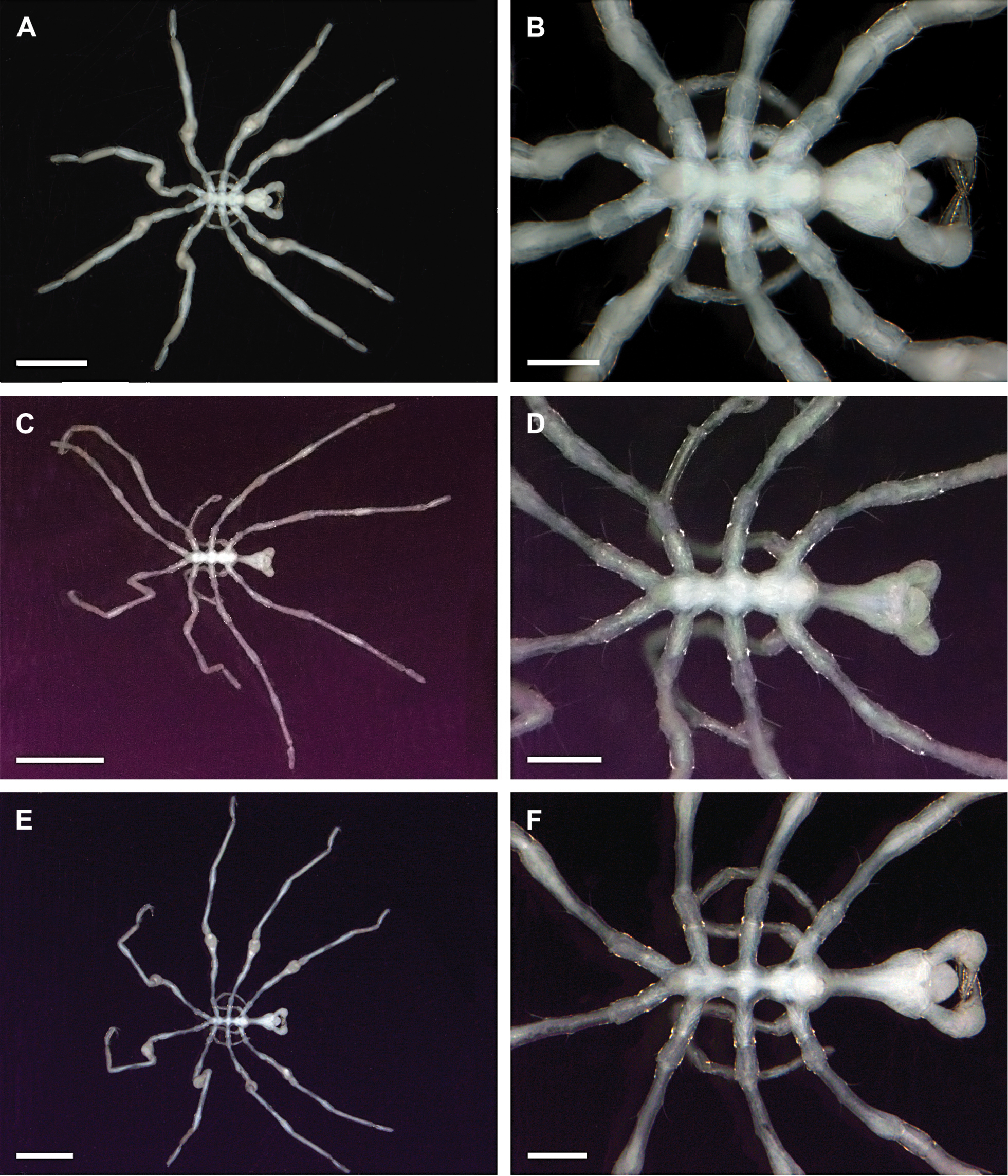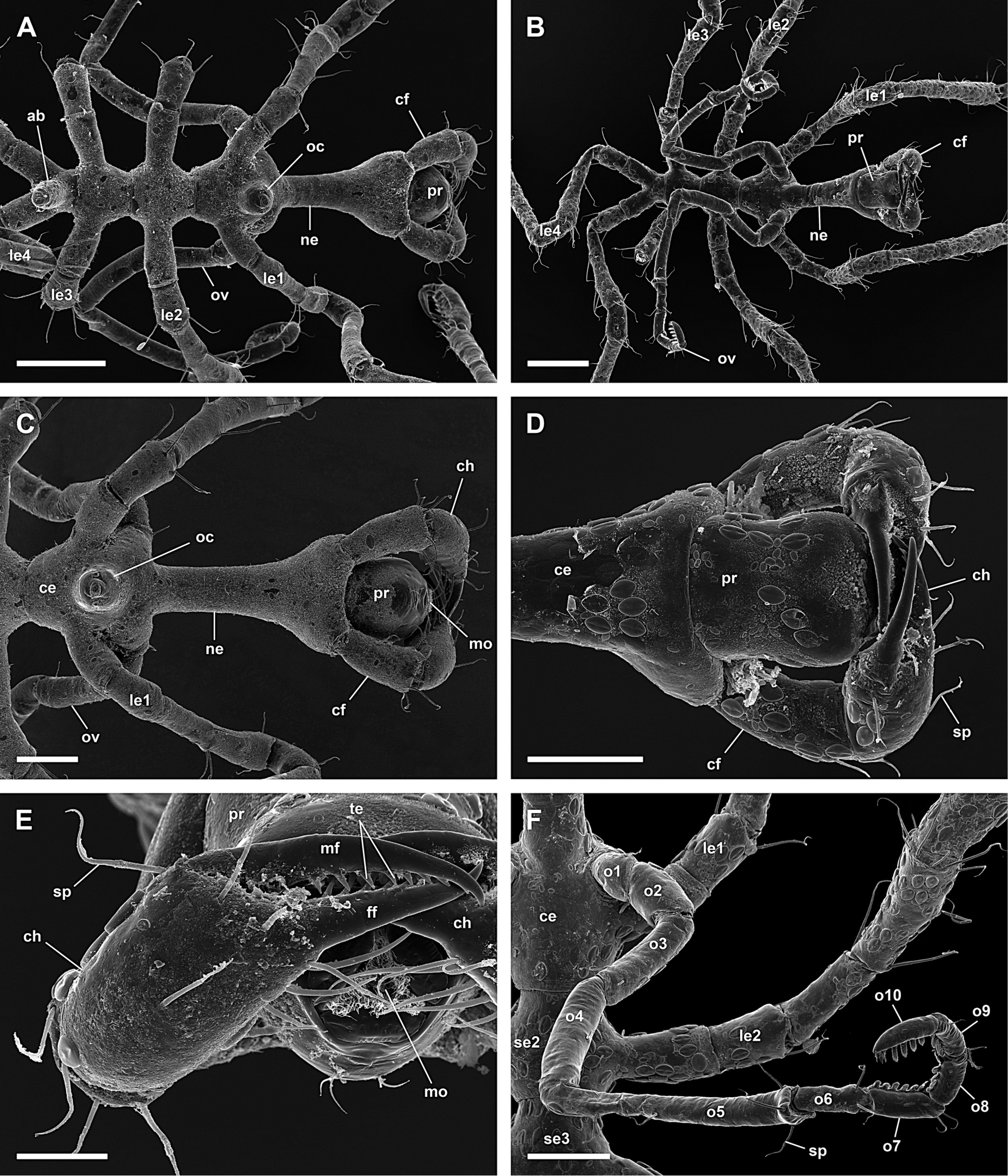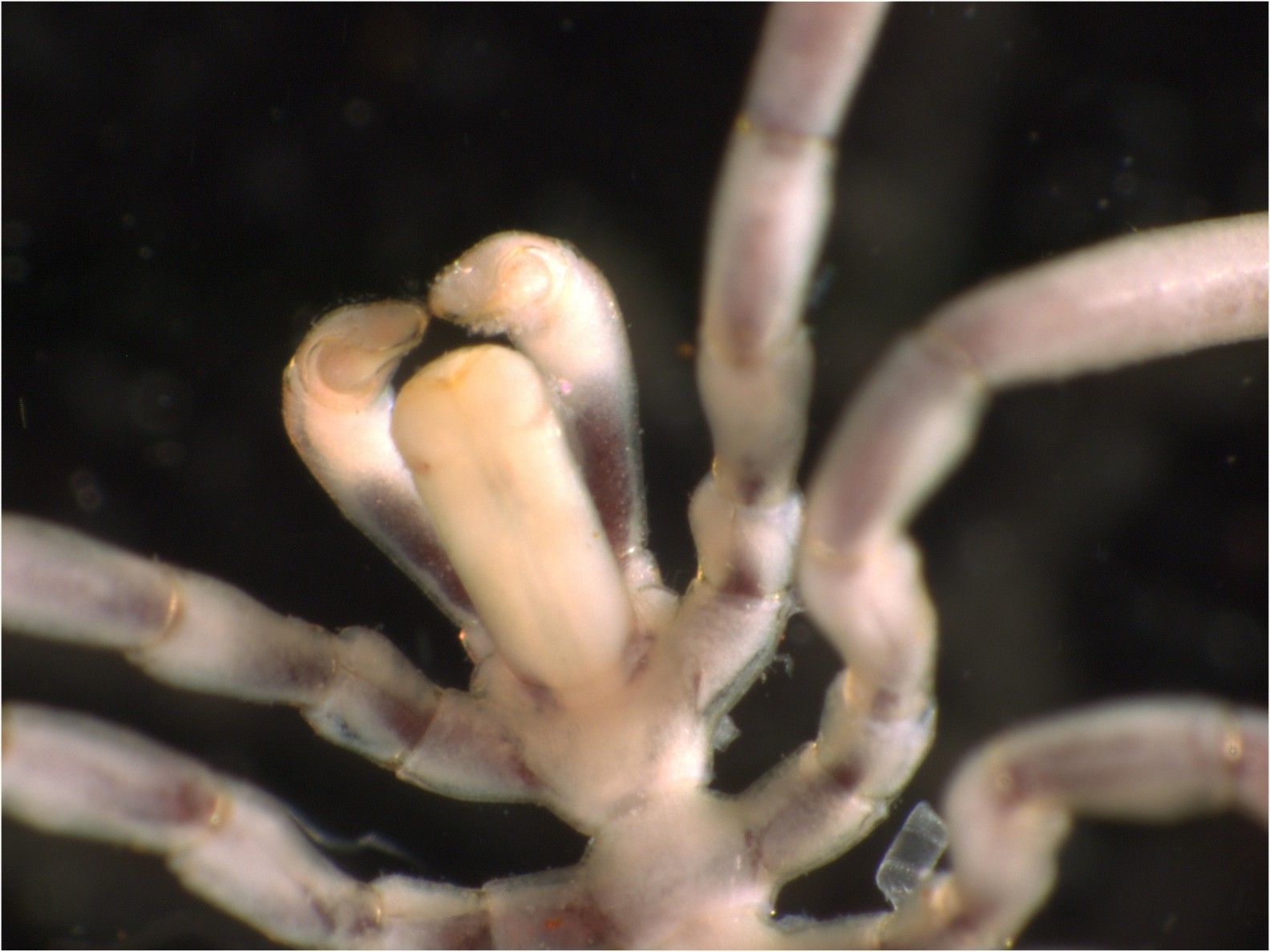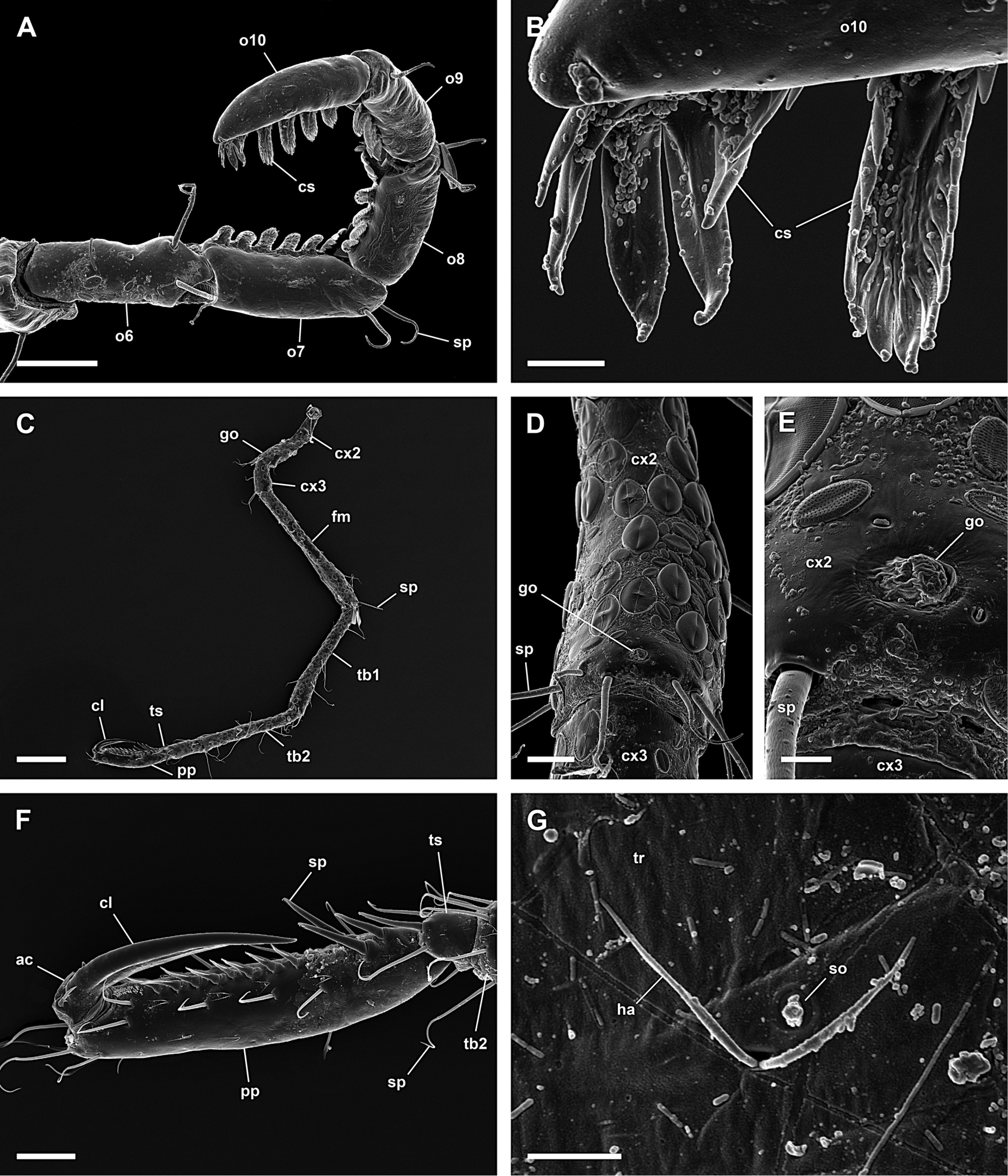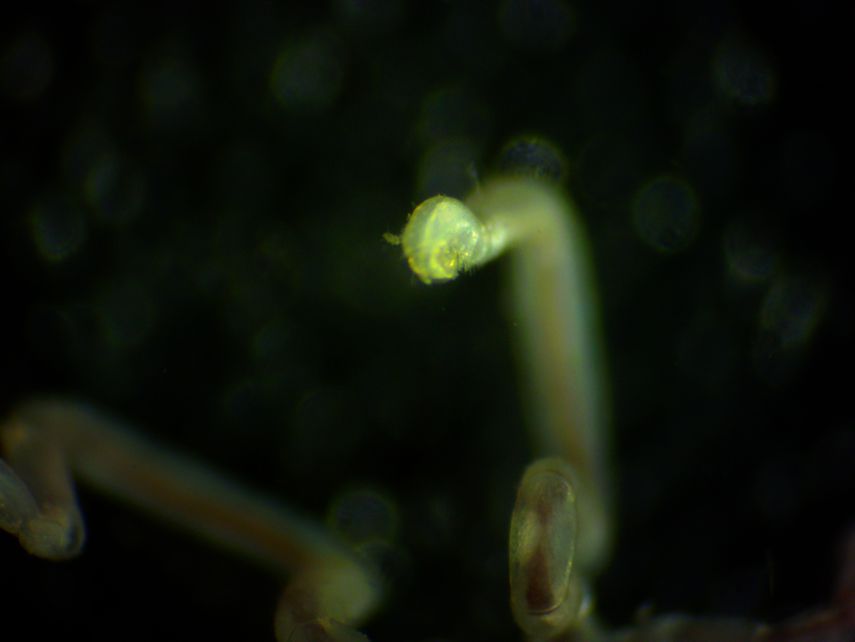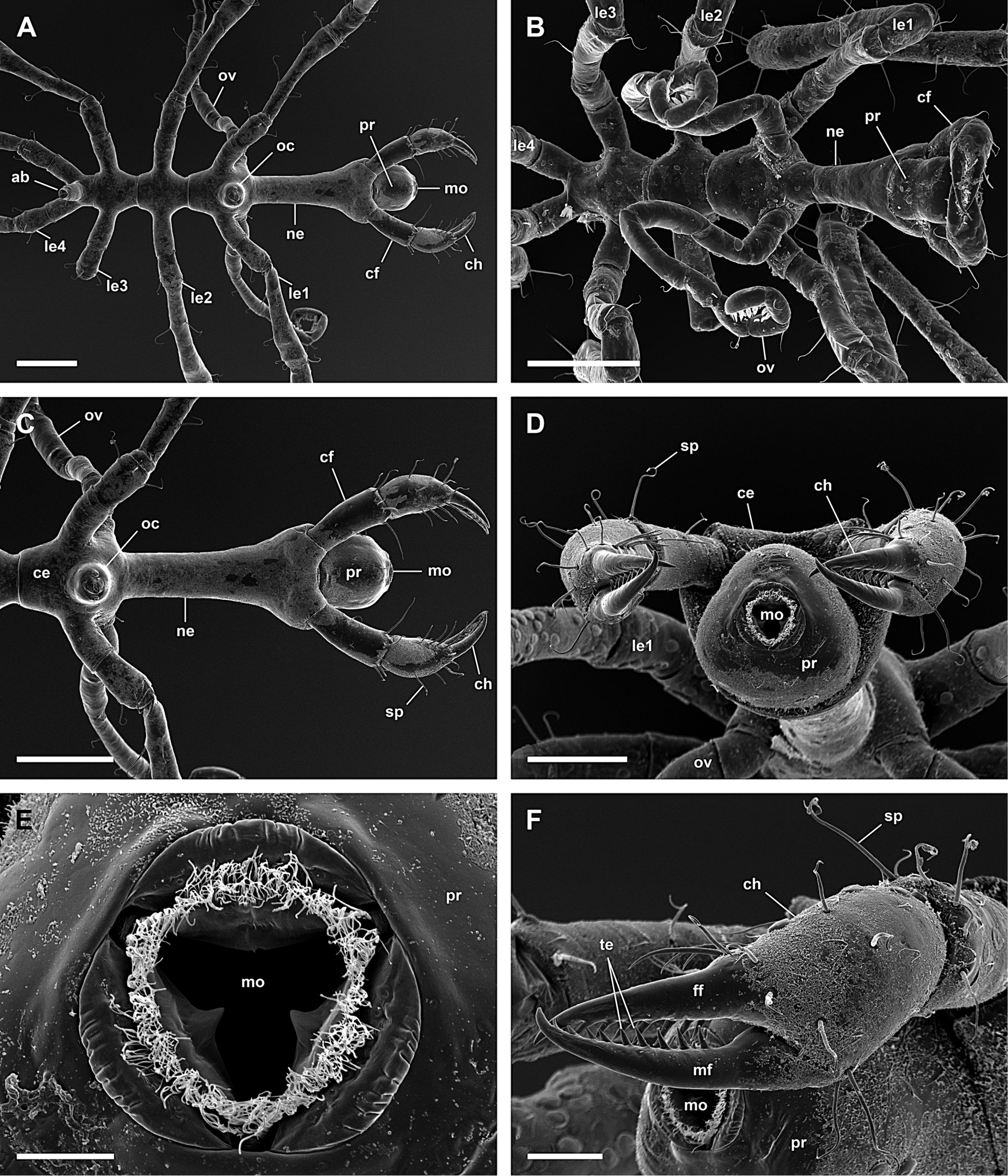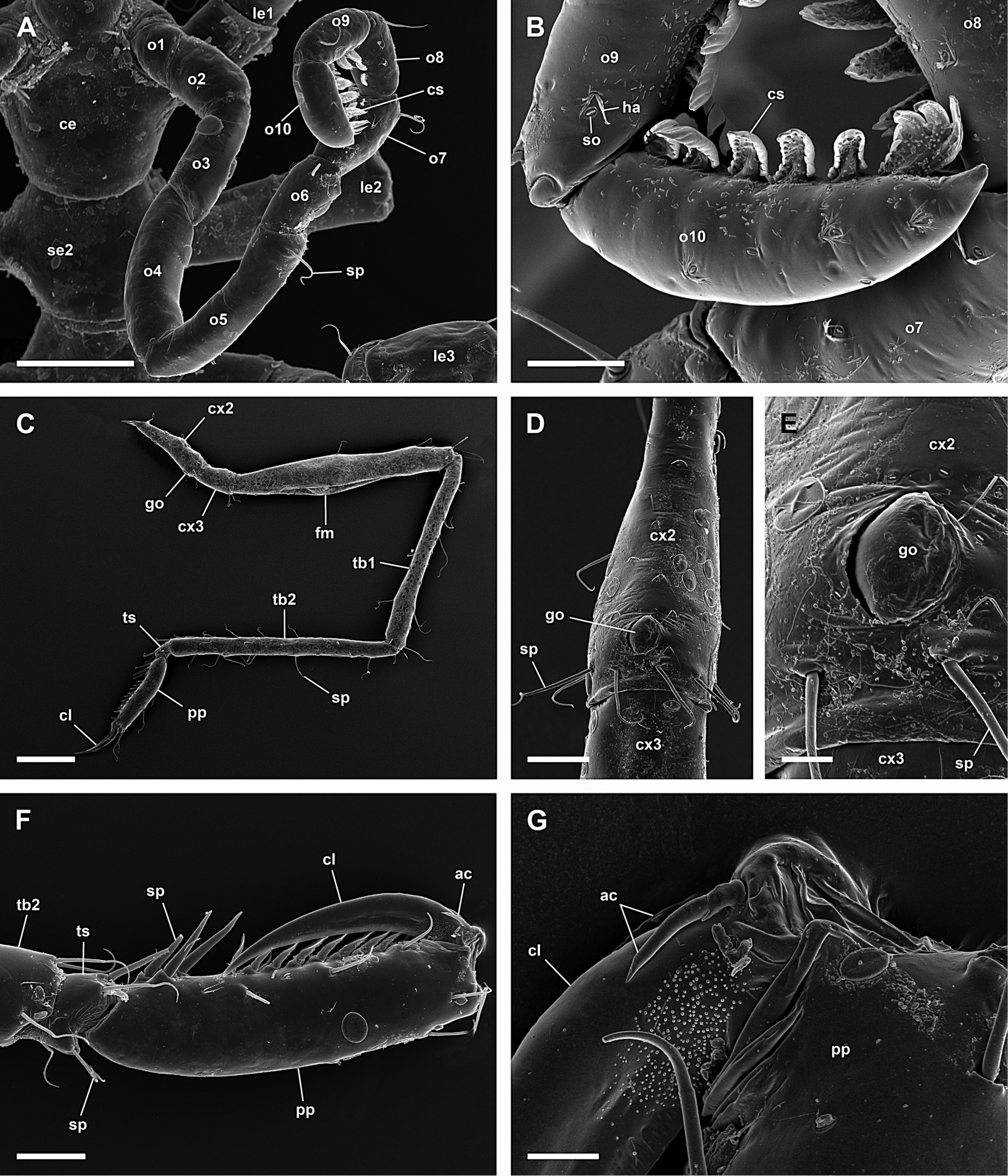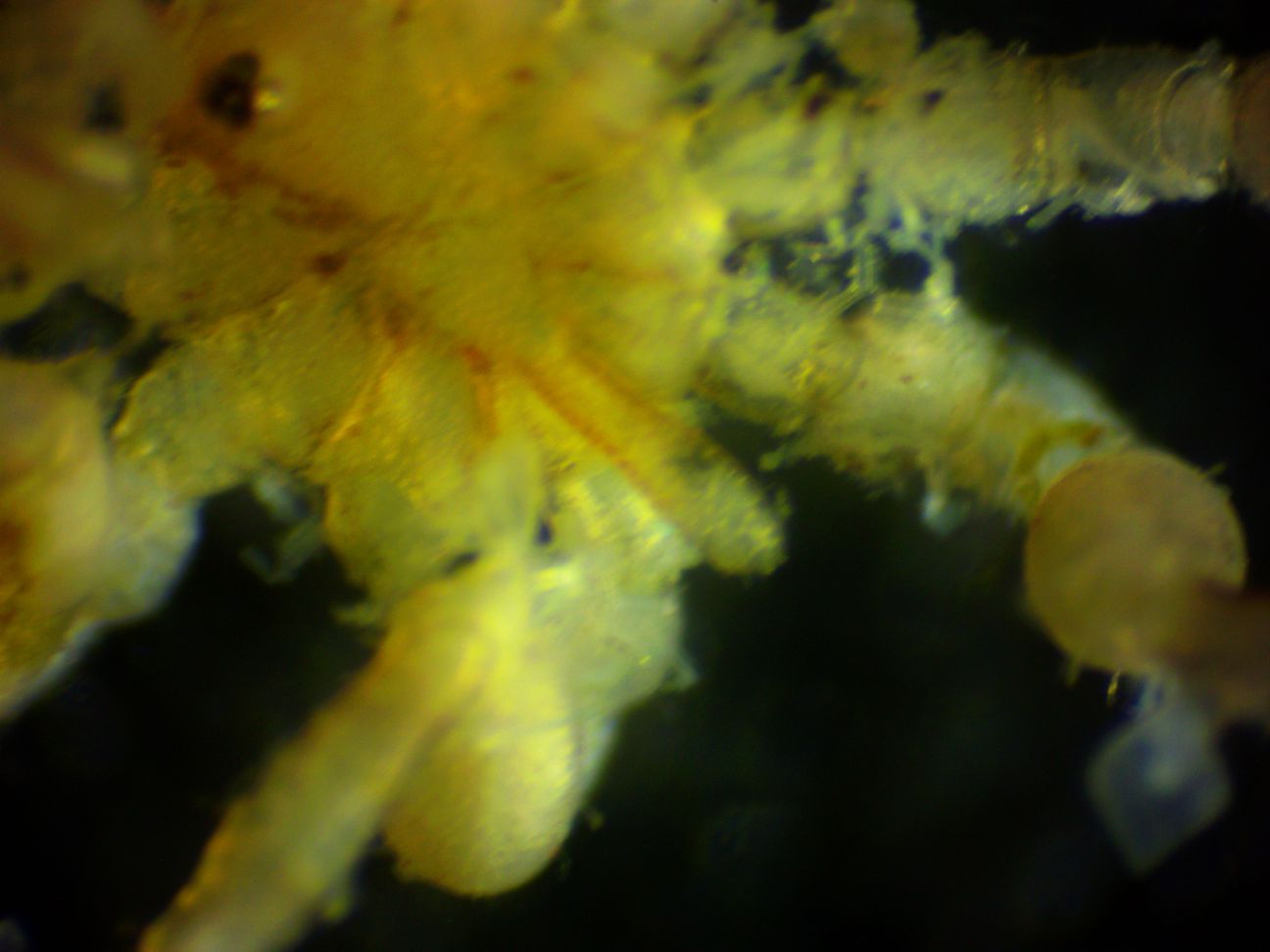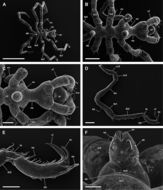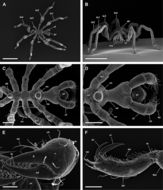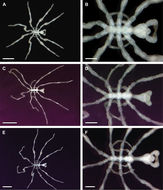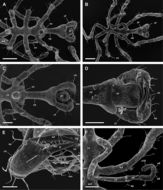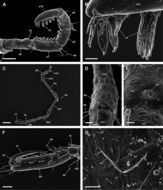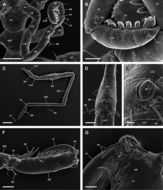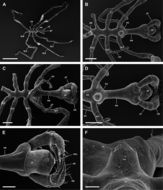-
Figure 8.Achelia echinata, female; A: Dorsal view; scale 400 µm; B: Ventral view of proboscis; scale 100 µm; C: Left 10-articled oviger; scale 100 µm; D: Lateral process, coxa 1 and 2 of right 3rd leg, lateral processes touch each other; scale 100 µm; E: Left 3rd leg; scale 200 µm; F: Ventral view of coxa 2 with genital opening, distal is right (left 3rd leg); scale 40 µm; G: Genital opening; scale 20 µm.
-
-
Tanystylum occidentalis from under an intertidal rock near the S end of Lopez Island. Total leg span about 8 mm. (Photo by: Dave Cowles, July 2006)
-
Figure 26.Callipallenidae 1; A, B: Callipallene emaciata, female, dorsal view; scales 1 mm and 250 µm, respectively; C, D: Callipallene phantoma, male, dorsal view; scales 1 mm and 250 µm, respectively; E, F: Callipallene producta, female, dorsal view; scales 1 mm and 250 µm, respectively.
-
-
Figure 28.Callipallene emaciata, male; A: Dorsal view; scale 1 mm; B: Dorsal view of trunk; scale 200 µm; C: Dorsal view of cephalon with rather slender neck; scale 100 µm; D: Right 3rd leg; scale 100 µm; E: Tarsus, strongly curved propodus, and claw, auxiliary claws about half as long as claw (right 3rd leg); scale 100 µm; F: Segment 3, 4 and abdomen; scale 40 µm.
-
This is a view of the underside of the whole animal
-
Figure 29.Callipallene emaciata, female; A: Dorsal view; scale 1 mm; B: Frontal view; scale 1 mm; C: Dorsal view of trunk; scale 200 µm; D: Dorsal view of cephalon with rather slender neck; scale 200 µm; E: Left chela, dorsal is up; scale 40 µm; F: Tarsus, strongly curved propodus, and claw, auxiliary claws about half as long as claw (left 3rd leg); scale 100 µm.
-
Phoxichilidium femoratum found by Joanna Cowles on an Epiactis ritteri anemone in a sea cave at Cape Flattery. Leg span 1.5 cm. Since no ovigerous legs are present, this must be a female. (Photo by: Dave Cowles, July 2009)
-
Figure 26.Callipallenidae 1; A, B: Callipallene emaciata, female, dorsal view; scales 1 mm and 250 µm, respectively; C, D: Callipallene phantoma, male, dorsal view; scales 1 mm and 250 µm, respectively; E, F: Callipallene producta, female, dorsal view; scales 1 mm and 250 µm, respectively.
-
-
Figure 30.Callipallene phantoma, male; A: Dorsal view of trunk; scale 200 µm; B: Ventral view of trunk; scale 200 µm; C: Dorsal view of cephalon with very long and slender neck; scale 100 µm; D: Ventral view of proboscis; scale 100 µm; E: Left chela, dorsal is down; scale 40 µm; F: Left 10-articled oviger; scale 100 µm.
-
-
2005 California Academy of Sciences
CalPhotos
This male sea spider is brooding fertilized eggs he gathered from his mate. The resulting larvae will parasitize the hydroid Aglaophenia on which the adults feed. 8 mm across. These cryptic sea spiders move very slowly.
-
Figure 31.Callipallene phantoma, male; A: Distal articles of left oviger with compound spines; scale 40 µm; B: Compound spines on last oviger-article; scale 5 µm; C: Left 3rd leg; scale 200 µm; D: Ventral view of coxa 2 with genital opening, distal is down (right 2nd leg); scale 20 µm; E: Genital opening; scale 5 µm; F: Tarsus, straight propodus, and claw with very short auxiliary claws (right 3rd leg); scale 40 µm; G: Hair and slit organ on dorsal side of trunk; scale 5 µm.
-
-
Figure 32.Callipallene phantoma, female; A: Dorsal view of trunk; scale 200 µm; B: Ventral view of trunk; scale 200 µm; C: Dorsal view of cephalon with very long and slender neck; scale 200 µm; D: Frontal view of cephalon; scale 100 µm; E: Mouth opening; scale 20 µm; F: Left chela, dorsal is up; scale 40 µm.
-
-
Figure 33.Callipallene phantoma, female; A: Right 10-articled oviger; scale 100 µm; B: Distalmost oviger-articles with compound spines; scale 20 µm; C: Right 3rd leg; scale 200 µm; D: Ventral view of coxa 2 with genital opening, distal is down (left 4th leg); scale 40 µm; E: Genital opening; scale 10 µm; F: Tarsus, straight propodus, and claw with very short auxiliary claws (left 3rd leg); scale 40 µm; G: Small auxiliary claws; scale 10 µm.
-
This closeup of the head shows the eye turret, the proboscis (top left), the chelicerae (chelifores) next to the proboscis which are two-segmented and end with a knob rather than a chela, the basal segments of the palps, and the coxae of the first several legs. Note that there is no finger-like projection on the dorsodistal part of the coxa of the first leg.
-
Figure 26.Callipallenidae 1; A, B: Callipallene emaciata, female, dorsal view; scales 1 mm and 250 µm, respectively; C, D: Callipallene phantoma, male, dorsal view; scales 1 mm and 250 µm, respectively; E, F: Callipallene producta, female, dorsal view; scales 1 mm and 250 µm, respectively.
-
In this closeup of the posterior body, the stub-like abdomen projecting from the thorax can be seen. Several algal cells are adhered to the leg in the lower right.
-
Figure 34.Callipallene producta, female; A: Dorsal view; scale 1 mm; B: Dorsal view of trunk; scale 200 µm; C: Ventral view of trunk; scale 200 µm; D: Dorsal view of cephalon with very long and slender neck; scale 200 µm; E: Ventral view of proboscis; scale 100 µm; F: Ocular tubercle with lateral sense organ; scale 40 µm.
-
Achelia latifrons found on an Epiactis prolifera anemone at Cape Flattery. The distance from the tip of the proboscis (top left) to the tip of the abdomen (bottom right) is 3 mm. Total leg span is 11 mm. (Photo by: Dave Cowles, July 2014)

